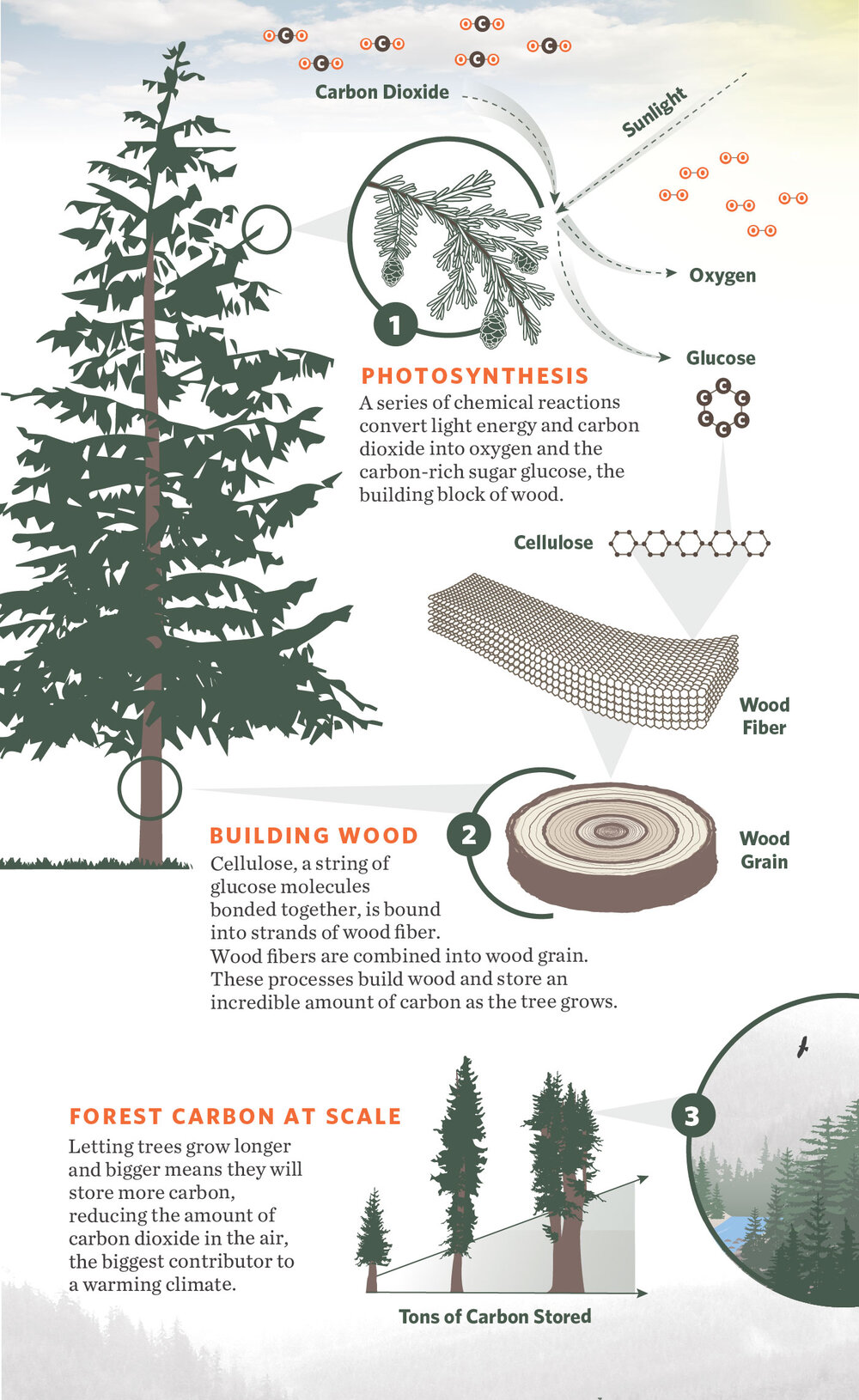The climate crisis is here and, among many things we need to change, we need to rapidly and dramatically decrease planet-warming emissions.
Worldwide, nature’s power to breathe, filter and store carbon dioxide can provide more than 1/3 of emissions reductions needed to meet the Paris Agreement target, according to a pioneering study by The Nature Conservancy and partners.
Trees are one of the natural solutions available.
Trees capture and store carbon dioxide (CO2) through the process of photosynthesis. By conducting a series of a chemical reactions, trees convert light energy and carbon dioxide into oxygen and sugar, which is then used to make wood. When trees are allowed to grow for years, they build up their storage of carbon in both aboveground biomass–leaves, stems, trunks–and below ground in roots. Together, they pull carbon out of the atmosphere and store it, all for free.
How trees capture and store carbon dioxide (in aboveground biomass – leaves, stems and trunks).
Infographic: TNC/Erica Simek Sloniker
Over decades and even centuries, forests can store many million tons of carbon dioxide.
Here in the Pacific Northwest, our forests are some of the best at storing carbon dioxide and they must be managed accordingly in order to maximize their ability to store carbon dioxide.
If you’d like to learn more about how TNC researchers have been advancing the science around the impacts of climate change, we have been actively (1) researching the impacts of climate change and the potential of (2) natural climate solutions, such as forests, to capture and store carbon.
TNC is also working with partners across this region to promote and enhance the ability of forests to store more carbon and help reduce the impacts of climate change (Washington Rainforest Renewal Project).
1 Case, Michael J., Brittany G. Johnson, Kristina J. Bartowitz, and Tara W. Hudiburg. “Forests of the future: Climate change impacts and implications for carbon storage in the Pacific Northwest, USA.” Forest Ecology and Management 482 (2021): 118886.
2 Robertson, James C., Kristina V. Randrup, Emily R. Howe, Michael J. Case, and Phillip S. Levin. “Leveraging the potential of nature to meet net zero greenhouse gas emissions in Washington State.” PeerJ 9 (2021): e11802.
